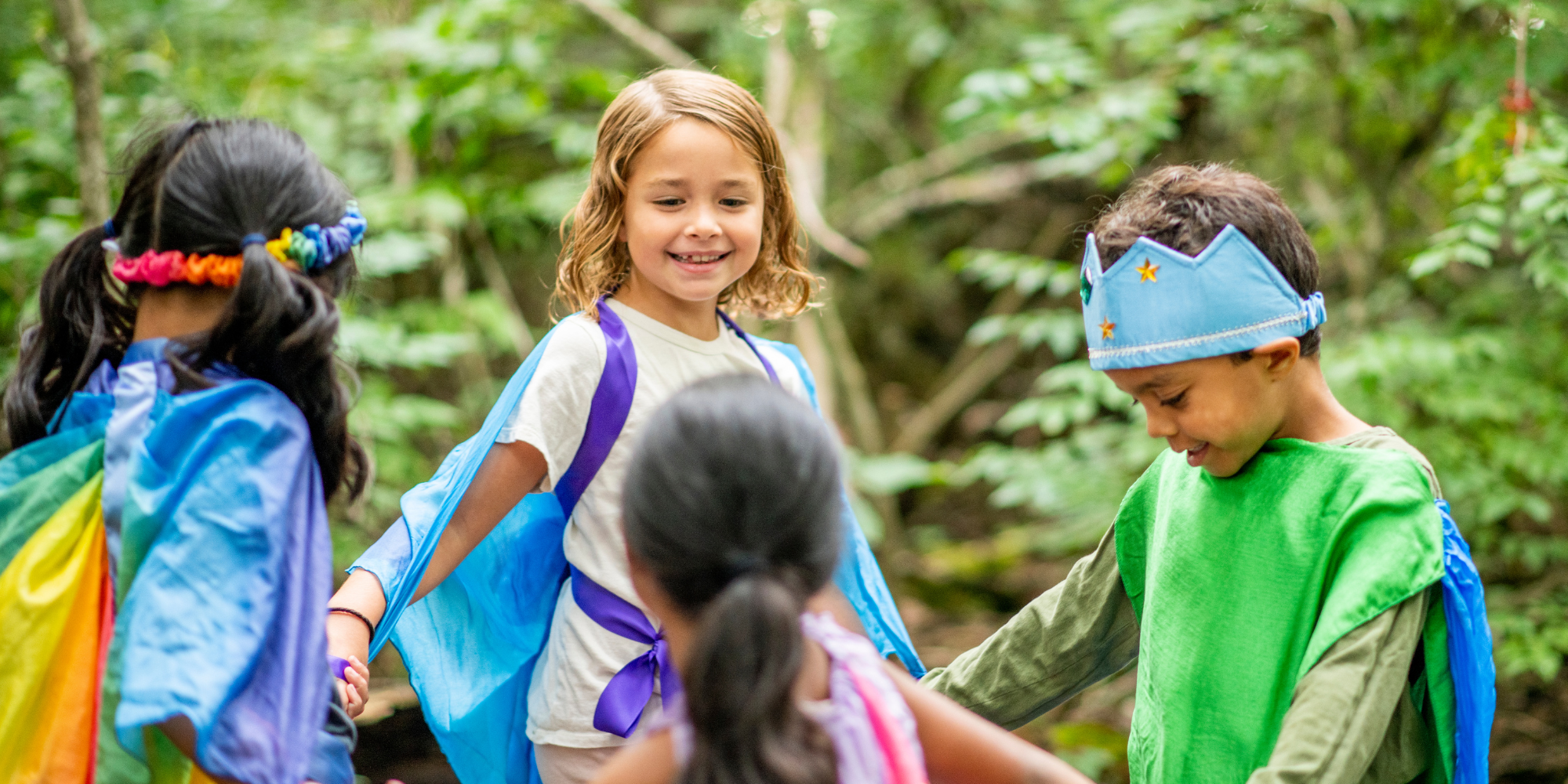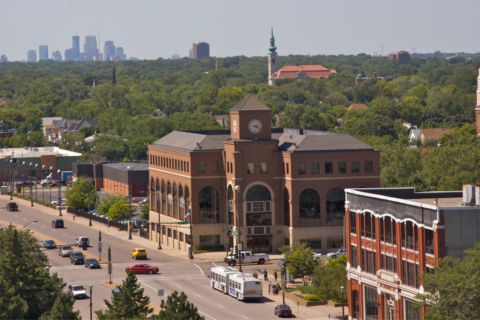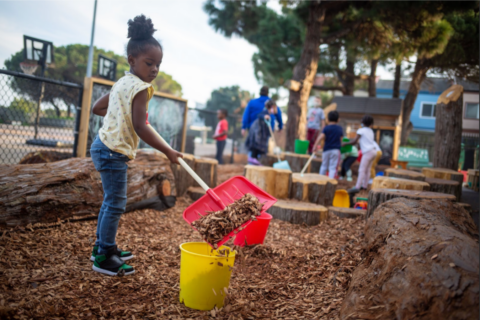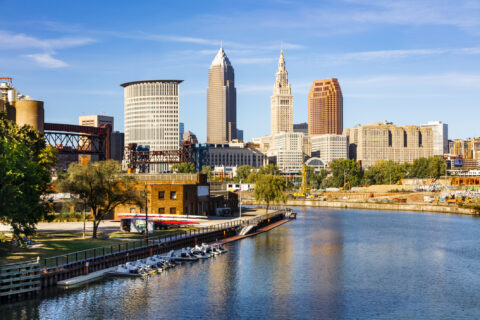Now is a unique and important time for cities to focus on federal funding. Last year the Biden Administration passed once-in-a-generation infrastructure legislation that makes funds available for local governments – with a large influx of monies within the next five years. There’s an additional focus on environmental justice and equity across the Administration. Given this emphasis, many of these funds can truly help cities achieve their children and nature strategies. All leaders have to do is keep children and nature in their line of sight.
Cities Connecting Children to Nature (CCCN), a partnership between the National League of Cities and Children and Nature Network, through conversations with agency partners created an online federal funding resource that identifies a set of six “best fit” programs across four major agencies that cities may leverage. Cities can apply via a direct application, through partnerships, or through state agencies for a diverse number of eligible projects. The funding resource highlights a sampling of investments that, in addition to moving forward infrastructure, resilience, transportation, and environmental protection priorities, also represent opportunities to connect children to nature more equitably.
City leaders can look at these funds from a number of angles which means it is possible to find one of their priorities that align. Whether their focus is sustainability and resilience, cost savings, equity, health, education, child welfare, or well-being, cities can leverage these in a way that supports their goals. It’s up to local leaders to keep children at the forefront of these funding opportunities in order to incorporate children-to-nature strategies such as green schoolyards and nature play spaces into these projects.
Below are examples of how cities leveraged federal funds to make improvements that also increase children’s access to nature:
- Building Resilient Infrastructure and Communities (BRIC): Northwest Resiliency Park, one of the only resiliency parks in the nation, will be the largest park in Hoboken, New Jersey at 5.4 acres, providing the City with recreation and public space. It will have strategic installations of green infrastructure and innovative stormwater management measures. The City undertook an extensive community engagement process to ensure the park is well-adapted to the needs of the surrounding community. This engagement included a survey, public participation events, a community design charrette, and many public meetings.
- Clean Water State Revolving Fund (CWSRF): The Camden County Municipal Utility Authority received a $5.4 million loan from the New Jersey Infrastructure Bank, the state’s CWSRF, to fund a city-wide nature-based solutions project. The project has an estimated cost savings of $3.1 million over the 30-year loan. It involves building nature-based solutions throughout Camden, including rain gardens and porous concrete sidewalks, as well as a green jobs training program for youth in the maintenance of nature-based infrastructure.
- Outdoor Recreation Legacy Program (ORLP): The City of Mobile transformed Three Mile Creek from a degraded urban stormwater conveyance into a community asset that connects diverse neighborhoods and provides new recreation opportunities, including a park. The grant supported the initial construction of a greenway system in a low-income, minority area that previously had limited recreational resources.
- Flood Mitigation Assistance (FMA): Resilient St. Vrain restored the St. Vrain Creek Greenway Trail System in Longmont, CO. The project implemented channel improvements to the creek to help mitigate the impacts of future flooding. The end result was a unique opportunity for recreation for residents and visitors called Dickens Farm Nature Area. This section was converted into a nature preserve with kayak launches, shelters, restrooms, and a “nature discovery area” for children. This project not only helped protect life and property but also created multiple co-benefits for the community, in the form of recreation and environmental benefits.
While using federal funding to achieve city goals is not a new concept, the focus on equity and nearby nature investment in nature-deprived communities is of elevated priority in many of the grants listed. The examples in the guide call out water infrastructure and climate resilience projects that in addition to employing green infrastructure to improve an area, can also provide new or repurposed space for children to nature connection.
What are some essential key points that cities should keep in mind when looking to apply for these federal grants to support children and nature?
- Focus on aligning several cities’ goals together, such as infrastructure, climate change, sustainability, access to nature, and health and well-being.
- Keep equity at the forefront – what populations or areas could benefit from this project including naming ways to achieve gains through children’s access to nature
- Partnership is valued. So cities (especially smaller or mid-sized cities) may want to partner with local community organizations, work across agencies and departments, or even collaborate with other nearby towns and cities.
Borrowing language from a previous NLC transportation article: “Local governments will want to have bold projects in mind that align with local, state, and federal goals. Elected officials should begin by researching the program opportunity and then reaching out to relevant state and local partners who may be needed in an application.”
We encourage city leaders to check out these resources for additional support:
- Building Connections: How Communities Can Use Federal Funds to Connect People to Place, Opportunity, and Each Other (Webinar Recording from Safe Routes Partnership)
- Navigating Federal Transportation Programs and New Technical Assistance (NLC CitiesSpeak article)
With many of these grants needing a broader coalition, this resource can help cities understand how to partner across a state:










